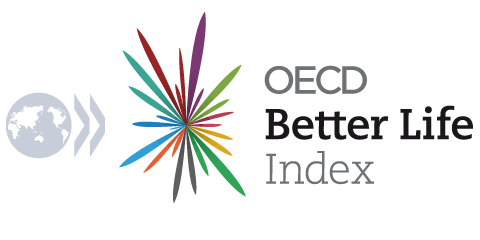Gender discrimination: a persistent threat to progress
Jun 8, 2012
This post first appeared on the Wikiprogress ProgBlog under the title Underlying discrimination against women stopping progress on gender equality and development
A girl who is married early and then begins child rearing early is not likely to finish her education, which then limits her employment opportunities. Her lower status in the family will not only affect her own well-being but also that of her children. If she then finds herself in an abusive relationship, this means she will have little access to economic resources inside the household and her ability to make decisions about her children’s well-being will be diminished. If the bank then requires her husband’s permission to take out a loan or open a bank account she will not be able to start a small business. These pervasive, but often invisible forms of discrimination stop women from fulfilling their full potential and to contribute to their own wellbeing and their countries’ progress.
The OECD Development Centre’s
2012 Social Institutions and Gender Index (SIGI) provides a stock-take of where countries currently stand on discrimination against women. While other measures of gender inequality tell us about gender gaps in education or employment, the
SIGI is unique in measuring what drives those gaps, such as women’s status in the family, the legal age to marry, inheritance discrimination, access to credit, and restrictions on right to own land and property.
The results of the SIGI, which was first launched in 2009, show that while there has been promising progress in some aspects of discrimination against women, there is still much more to be done. Areas of progress include the introduction of laws to combat domestic violence, an overall decline in early marriage and some countries showing improvement with respect to missing women. Certain forms of discrimination against women remain widespread.
Out of 121 countries covered in the 2012 SIGI, 86 have discriminatory inheritance practices or laws. On average across these countries, around half of women believe domestic violence is justified in certain circumstances. Some countries in
South Asia,
Central Asia and South-
East Asia show strong evidence of missing women due to son bias.
How do the regions compare?
Latin America is the top-ranking region in the 2012 rankings. Countries in Latin America generally have strong legal frameworks to promote gender equality in the family and property rights and countries have increasingly introduced laws to combat violence against women. The region has the highest share of women in parliament among developing countries:
in 2011, 20% of parliamentarians were women and 12 countries in the region currently have quotas to promote women’s representation in national governments. There is some stand out initiatives in the region. For example,
Argentina, the top-ranking country in the 2012 SIGI, has set up a special observatory to monitor discrimination and gender-based violence in radio and television.
Venezuela has introduced a law to address gender-based violence that not only includes punishment and prosecution, but also requires that the authorities implement programmes to raise awareness and change attitudes.
Sub-Saharan Africa and Middle East and North Africa show the highest levels of discrimination against women. Many countries have discriminatory laws in relation to marriage and property rights or do not have adequate protection against gender-based violence. In some countries, like
Niger or
Mali, over half of girls between 15 and 19 are married. However, there is reason to be optimistic. In
Rwanda and
South Africa, for example, the introduction of political quotas has led to a greater representation of women in politics. South Africa and
Morocco are among the countries where the social and legal status of women improved considerably over the past years. South Africa has introduced landmark reforms of inheritance laws, standing apart from the rest of the region. In Morocco, reforms to the Family Code have granted women equal rights in marriage and the country has also introduced quotas to boost women’s political representation.
In the face of mounting evidence that gender equality is crucial for development, economic growth and poverty reduction, we need to sharpen our thinking on how these underlying forms of discrimination can be addressed. While legal reform is an important first step, it is clear that
laws alone won’t change the deeply ingrained mindsets that are holding back women and girls from unleashing their full potential.
Community mobilization and community awareness is critical and there are examples of innovative programmes such as the Partners in Prevention “
Engaging Young Men through Social Media for the Prevention of Violence against Women”, which engages with young people via the use of social media to reach out to boys and men to take action to end gender-based violence in Asia and the Pacific.
Economic incentives can also make a difference. India has introduced a cash transfer programme to address early marriage and there is also the
Nepal tax incentive which encourages families to share property with their wives, daughters.
At the launch of the 2012 SIGI at the US Department of State on May 10 2012, Chief Economist Heidi Crebo-Rediker said, in her
opening remarks: “
We have to move from the anecdotal to the comprehensive. Armed with the facts, we have to explain why, if you care about growth, you must care about women. We have to explain why it matters. (…) That is why Secretary Clinton and the United States support the launch of the OECD’s Social Institutions and Gender Index. We want to study these barriers and identify solutions.” There is a broad consensus that gender equality matters as a fundamental human right and for poverty reduction and development. Policy-makers and donors must now invest in interventions to transform discriminatory social institutions to enable women and girls to fulfill their aspirations and fully contribute to social and economic life.


Comments